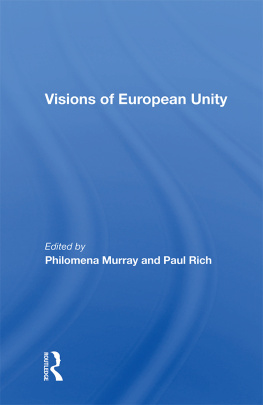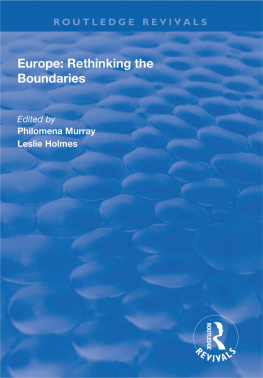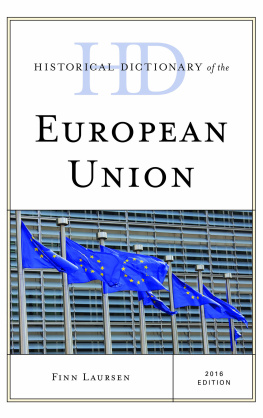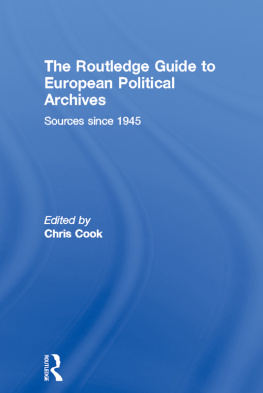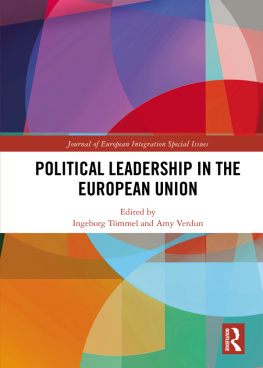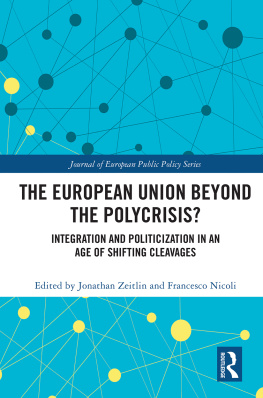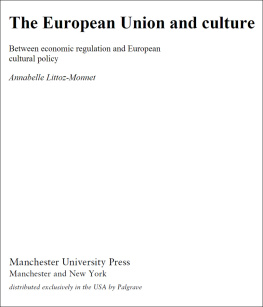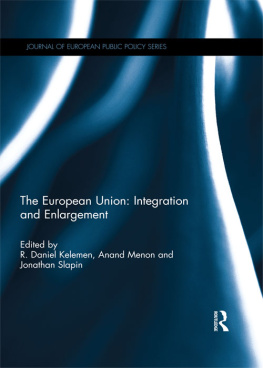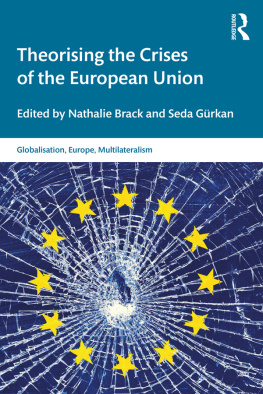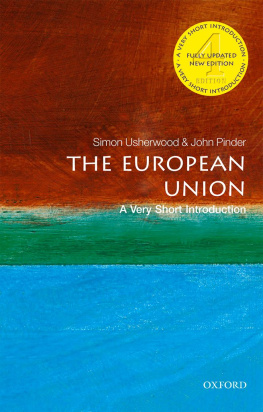Philomena Murray - Visions of European Unity
Here you can read online Philomena Murray - Visions of European Unity full text of the book (entire story) in english for free. Download pdf and epub, get meaning, cover and reviews about this ebook. City: London, year: 2019, publisher: Routledge, genre: Science / Politics. Description of the work, (preface) as well as reviews are available. Best literature library LitArk.com created for fans of good reading and offers a wide selection of genres:
Romance novel
Science fiction
Adventure
Detective
Science
History
Home and family
Prose
Art
Politics
Computer
Non-fiction
Religion
Business
Children
Humor
Choose a favorite category and find really read worthwhile books. Enjoy immersion in the world of imagination, feel the emotions of the characters or learn something new for yourself, make an fascinating discovery.
- Book:Visions of European Unity
- Author:
- Publisher:Routledge
- Genre:
- Year:2019
- City:London
- Rating:4 / 5
- Favourites:Add to favourites
- Your mark:
- 80
- 1
- 2
- 3
- 4
- 5
Visions of European Unity: summary, description and annotation
We offer to read an annotation, description, summary or preface (depends on what the author of the book "Visions of European Unity" wrote himself). If you haven't found the necessary information about the book — write in the comments, we will try to find it.
Visions of European Unity — read online for free the complete book (whole text) full work
Below is the text of the book, divided by pages. System saving the place of the last page read, allows you to conveniently read the book "Visions of European Unity" online for free, without having to search again every time where you left off. Put a bookmark, and you can go to the page where you finished reading at any time.
Font size:
Interval:
Bookmark:
Philomena Murray and Paul Rich

P.M.
P.R.
52 Vanderbilt Avenue, New York, NY 10017
2 Park Square, Milton Park, Abingdon, Oxon OX14 4RN
Product or corporate names may be trademarks or registered trademarks, and are used only for identification and explanation without intent to infringe.
Visions of European unity / edited by Philomena B. Murray and Paul B.
Rich.
p. cm.
Includes bibliographical references and index.
ISBN 0-8133-8965-8 (hardcover)
1. European Federation. I. Murray, Philomena B. II. Rich, Paul
B., 1950- .
D1060.V57 1996
341.24'2dc20 95-42498
CIP
Melbourne, Australia
Luton, U.K.
- CAP Common Agricultural Policy
- CD Christian Democratic Party
- CDU\CSU German Christian Democratic Union
- CERES Centre d'Etudes, de Recherches et de l'Education Socialiste
- DG Directorate General
- EC European Community
- ECJ European Court of Justice
- ECSC European Coal and Steel Community
- ECU European Currency Unit
- EDC European Defence Community
- EDG European Democratic Group
- EEA European Economic Area
- EEC European Economic Community
- EES European Economic Space
- EFTA European Free Trade Association
- EMS European Monetary System
- EMU European Monetary Union
- EP European Parliament
- EPA European Political Assembly
- EPP European People's Party/ Federation of the Christian Democratic Parties of the European Community
- EPU European Political Union
- ETUC European Trade Union Confederation
- EU European Union
- EUF European Union of Federalists
- EURATOM European Atomic Energy Community
- EUT Draft Treaty establishing the European Union
- FN National Front of France
- IGC Intergovernmental Conference
- IMF International Monetary Fund
- MEP Member of the European Parliament
- TEU Maastricht Treaty on European Union
- MFE European Federalist Movement
- NATO North Atlantic Treaty Organisation
- OJ Official Journal of the European Communities
- PCI Italian Communist Party
- POSL Parti Ouvriere Socialiste de Luxembourg
- PSB Parti Socialiste Beige
- SACEUR Supreme Allied Commander Europe
- SEA Single European Act
- SFIO Section Francaise de l'lnternationale Ouvriere, former name of the French Socialist Party, now known as the PSF
- SPD German Social Democratic Party
- UK United Kingdom
- UNICE Union of Industries in the European Community
- WEU Western European Union
Introduction
Font size:
Interval:
Bookmark:
Similar books «Visions of European Unity»
Look at similar books to Visions of European Unity. We have selected literature similar in name and meaning in the hope of providing readers with more options to find new, interesting, not yet read works.
Discussion, reviews of the book Visions of European Unity and just readers' own opinions. Leave your comments, write what you think about the work, its meaning or the main characters. Specify what exactly you liked and what you didn't like, and why you think so.

